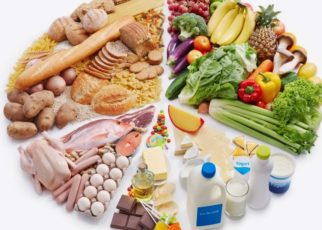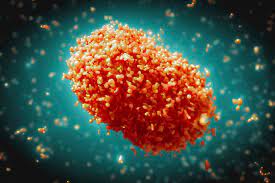Do you know what is the dash diet?
High blood pressure affects more than millions of people worldwide, and the number is still rising. As a fact, the number of people with blood pressure has tripled in the last twenty years. It is a serious health problem, as high blood pressure is associated with a higher risk of conditions like kidney failure, stroke, and heart disease.
This dash diet is considered to play a major role in reducing the high blood pressure; policymakers and researchers have engineered specific dietary approaches to reduce the blood pressure. (source)
In a dash diet a person eats vegetables, fruits, low-fat dairy foods, whole grain, fish, poultry, beans, and nuts. While the person has to limit the consumption of fat, red meat, salt, and sugar in a dash diet.
The main focus of the dash diet is to lower high blood pressure. So in this article, we will tell you about what is the dash diet and how it helps to lower high blood pressure and illness.
What is the Dash Diet?
Dietary strategies to stop hypertension or dash is a type of diet that recommends the people who want to treat or prevent hypertension, also known as high blood pressure. Also, it reduces the risk of heart disease.
This diet only focuses on vegetables, fruits, lean meats, and whole grains. Researchers and scientists noticed that high blood pressure was rarely found in people who followed the plant-based diet like vegetarians and vegans, and hence the dash diet was born.
So that is why the dash diet features vegetables and fruits while including some lean protein sources such as fish, beans, and chicken. Dash diet is low in salt, fat, red meat, and added sugars.
One of the main reasons that scientists believe is that people with high blood pressure can get the benefit from this diet because it lowers the salt consumption.
The regular dash diet plan promotes not more than one teaspoon of sodium per day, and that is in line with many national guidelines. The low salt version advises not more than ¾ teaspoon of sodium per day.
Two Types of Dash Diet
There are two types of Dash Diet:
The Low Sodium Dash Diet: The most sodium consumption is 1,500 mg each day.
The Standard Dash Diet: People intake up to 2,300 mg of sodium each day.
Most people in the U.S. eat 3,600 mg of sodium each day, so both the dash diets focus to lower sodium consumption.
In the clinical trial to see the diets impact, researchers have found that joining the dash diet with low sodium consumption has more impact on blood pressure.
As people lower their salt consumption, they should also consume more foods that contain potassium. The potassium helps the blood vessels relax, and it can lower the blood pressure. People should focus on taking 4,700 mg of potassium every day.
Foods that contain potassium include:
- Kidney beans and lentils
- Dried fruit like prunes, apricots, and raisins
- Squash
- Orange juice
- Potato
- Banana
A ½ cup of dried apricots will give you around 30% of a person’s everyday need for potassium. And a cup of cooked lentils that gives 21%.
The Mediterranean diet also benefits the heart and overall health.
Potential Benefits
Beyond decreasing high blood pressure, the dash diet gives a number of possible benefits, containing lower cancer risk and weight loss. But, you should not expect the dash diet to help you drop weight on its own. This diet was created fundamentally to reduce blood pressure. Weight loss might simply be an added perk. The dash diet works in your body in many ways.
Reduce Blood Pressure
It is a measure of the force that is put on the organs and blood vessels as the blood passes through them. It is counted in two numbers:
- Diastolic Pressure: The force in the blood vessels within heartbeats, when the heart is at rest.
- Systolic Pressure: the force in the blood vessels when the heartbeats.
Normally, the blood pressure for adults is the diastolic pressure below 80 mmHg and the systolic pressure below 120 mmHg. It is written normally with systolic pressure above a diastolic blood pressure, like this:- 120/80.
People who have a blood pressure record like 140/90 are thought to have high blood pressure. Amazingly, the dash diet shows reducing the blood pressure in both high blood pressure people and healthy people.
Experts say people on the dash diet also experienced low blood pressure even if they did not lose the weight or restrict the salt consumption.
However, when sodium consumption is restricted, the dash diet reduces blood pressure even further. As a matter of fact, the biggest decline in blood pressure was seen in people with the lowest salt intake.
These low salt diet results were most effective in people who already have high blood pressure, lower the diastolic pressure by an average of 5 mmHg and systolic pressure by 12 mmHg.
People with normal blood pressure ex[erience lower diastolic pressure by two mmHg and systolic pressure by 4mmHg.
Remember that reducing blood pressure does not always mean that it decreases the risk of heart disease.
Might Aid Weight Loss
You will probably experience lower blood pressure on the dash diet however it does not affect your weight necessarily. If you have high blood pressure you need to lose weight to keep a check.
The reason is that the more you weigh, the higher will be the blood pressure. Moreover, losing weight helps to lower the blood pressure. Some experts recommend that people can lose weight by taking the dash diet.
However, the people who lose weight on the dash diet have been following controlled calorie shortage—meaning that they were told to eat fewer calories than they were consuming.
The dash diet can cut plenty of high fat, sugar foods; people might find that they automatically lower their calorie consumption and lose weight. Moreover, other people might have to consciously limit their consumption.
Either way, if you want to lose weight on a dash diet, then you will still need to go on the calorie-reduced diet.
Other Health Benefits
Dash diet might also affect other areas of health like:-
- Decreases cancer risk: A recent study indicates that people who follow the dash diet had a lower risk of a few cancers such as breast cancer and colorectal.
- Lowers Diabetes Risk: The dash diet has been associated with a lower risk of type 2 diabetes. Some studies also have shown that it can increase insulin resistance as well.
- Lowers metabolic syndrome risk: Some experts note that the dash diet lowers the risk of metabolic syndrome by 81%.
- Decreases Heart Disease Risk: In a recent review, women following the dash diet was linked with a 20% lower risk of heart disease and 29% of lower risk of strokes.
Many of these shielding effects are associated with diets that are high in vegetable and fruit content. So eating more vegetables and fruits can help to reduce the risk of disease.
Does it Work for Everyone?
While experts on the dash diet say that the biggest decrease in blood pressure happened in those with the lowest salt consumption, the benefits of salt limitation on lifespan and health are not clear-cut.
For people who have high blood pressure, lessening the salt consumption significantly affects the blood pressure. But in people with normal blood pressure, the effects of lower salt consumption are much less.
The study says that many people are salt sensitive —it means that salt uses a greater influence on blood pressure.
Restricting Salt Too Much is Not Good for Health
Consuming too little salt has been associated with health problems like an increased risk of insulin resistance, heart disease, and fluid retention.
The low salt version of the dash diet suggests the people eat not more than ¾ teaspoon of sodium per day.
However, it is unclear that there are any kind of benefits to reduce salt consumption this low even if people with high blood pressure.
As a matter of fact, a recent study has found that there is no link between salt consumption and the risk of death from heart disease, though the fact that reducing salt intake caused a modest decrease in blood pressure.
What to Eat on the Diet
The dash diet does not list specific foods to eat. Instead, it suggests specific servings of different food groups.
The number of servings you can eat depends on how many calories you intake. Below here are some examples of food portions based on the 2,000 calorie diet.
Whole Grains: 6-8 Servings per Day
Some examples of whole grains that contain whole-grain bread or whole-wheat, brown rice, quinoa, whole-grain breakfast cereals, oatmeal, and bulgur.
The serving include:
- One slice of whole-grain bread
- One ounce of dry whole-grain cereal
- Half cup of cooked rice, cereal, or pasta
Vegetables: 4-5 Servings Per Day
All vegetables are allowed on the dash diet.
The serving include:
- One cup of raw green leafy vegetables like kale or spinach
- Half cup of sliced vegetables—cooked or raw—like carrots, squash, broccoli, or tomatoes
Fruits: 4-5 Servings Per Day
If you follow the dash diet plan, you will be consuming lots of fruits. Fruits like apples, pears, berries, peaches, and tropical fruits like mango and pineapple.
The serving include:
- One medium apple
- ¼ cup of dried apricots
- Half cup of fresh, canned, or frozen peaches
Dairy Products: 2-3 Servings per Day
Dairy products on the dash diet should be low fat, such as low-fat cheese, skim milk, and yogurt.
The serving include:
- One cup of low-fat milk
- One cup of low-fat yogurt
- One ounce of low-fat cheese
Lean Chicken, Fish, and Meat: 6 Fewer Servings per Day
Select Lean cuts of chicken and try to eat a serving of red meat only occasionally–not more than once or twice a week.
The servings include:
- One ounce of cooked chicken, fish, or meat
- One egg
Seeds, Nuts, and Legumes: 4-5 Servings per Week
It includes peanuts, almonds, walnuts, hazelnuts, sunflower seeds, kidney beans, flaxseeds, split peas, and lentils.
The serving include:
- ⅓ cup of nuts
- Two tablespoons of nut butter
- Two tablespoons of seeds
- Half cup of cooked legumes
Oils and Fats: 2-3 Servings per Day
The dash diet suggests vegetable oils over other oils. It includes oil and margarine such as corn, canola, safflower, or olive. It also suggests light salad dressing and low-fat mayonnaise.
The serving include:
- One teaspoon of soft margarine
- One teaspoon of vegetable oil
- One tablespoon of mayonnaise
- Two tablespoons of salad dressing
Added Sugars and Candy: 5 or Fewer Servings per Week
Sugars are kept to a minimum on a dash diet, so restrict the consumption of candy, table sugar, and soda. The dash diet also limits unrefined sugars and alternative sugar sources such as agave nectar.
The serving include:
- One tablespoon of sugar
- One tablespoon of jam or jelly
- One cup of lemonade
Final Words
So now you have understood what is the dash diet. It is simple and easy to follow and also an effective way to lower blood pressure.
However, remember that cutting daily salt consumption to ¾ teaspoon or less has not been connected to any hard health benefits—like lower the risk of heart disease—despite the fact that it can reduce the blood pressure.
Also, the dash diet is very similar to the normal low-fat diet; it has large controlled trials that may not have shown to lower the risk of death by heart illness.
Healthy individuals might have little reason to follow this diet. Although, if you have high blood pressure or you are sensitive to salt, then a dash diet might be a good choice for you. If you find this information useful, drop a comment below this section.





